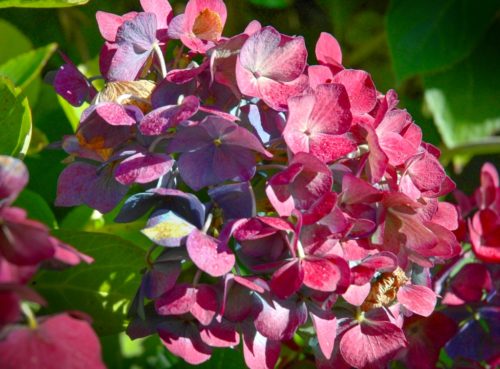Hydrangeas are deciduous shrubs that can grow up to 3 meters high.
Also known as:
Hortensia
You are viewing the mobile-adapted version of the page.
The one for tablets, laptop and desktop also provides general information, such as origin, toxicity and cultivation.
Hydrangea – (Hydrangea), is a deciduous shrub that can grow up to 3 meters high. Hydrangeas bloom from July until the first frost in October with white, blue, pink and purple flowers, depending on the acidity (pH) of the soil. In an acidic environment the hydrangea blooms blue, in an alkaline environment pink. Hydrangeas bloom purple when the soil is pH neutral.
Hydrangeas belong in temperate regions, love a nutritious, moist soil in partial shade.
In summer, hydrangea leaves droop during drought.
Hydrangeas are sensitive to frost: the shrubs are not hardy.
Bugs
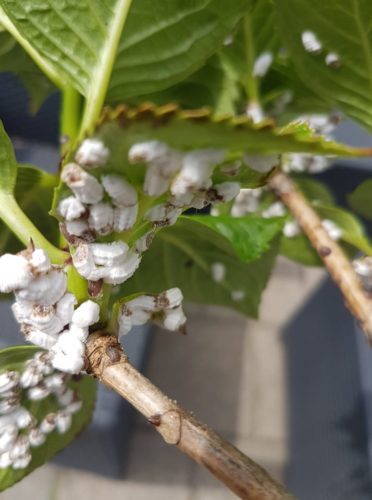
White woolly waxy fluff with wax threads: Hydrangea Scale (Pulvinaria hydrangeae). The lint is in fact the egg sac of the insect.
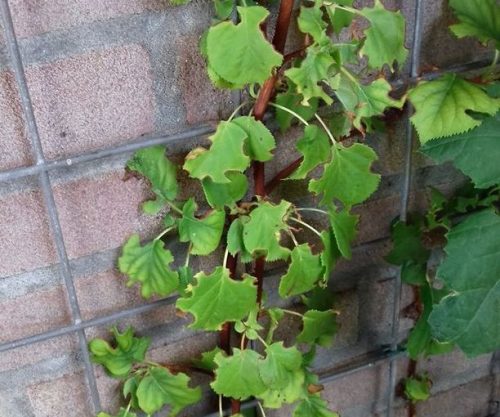
Semicircular bites from leaf margins: Vine weevil (Otiorhynchus sulcatus).
Fungi & diseases
Small brown spots on the leaf, growing into large spots, after which the leaf yellows, curls and dies: Alternaria.
Other
In summer during drought, the hydrangea leaves droop: water shortage. Watering at night in times of drought prevents a shortage.
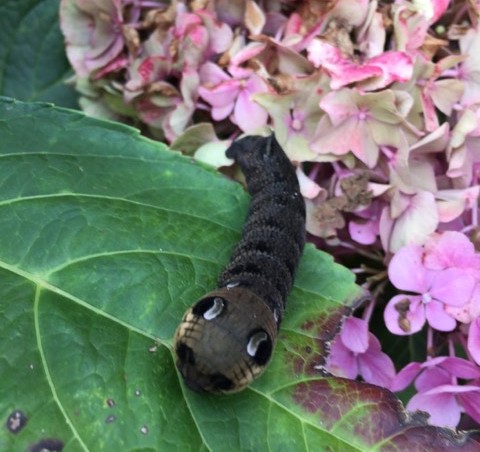
Eight-inch tall, conspicuous caterpillar on leaf: caterpillar of the Elephant hawk moth (Deilephila elpenor). The caterpillar is not harmful.
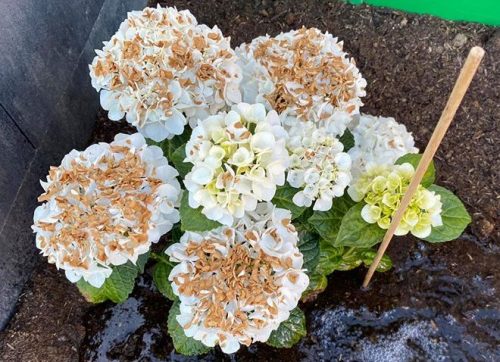
Scorch flower heads: hydrangeas tolerate fierce and extreme summer heat poorly. Protection from bright sun and regular watering (at the roots) prevent scorching of the flower heads. White umbels are more delicate than the colored ones.
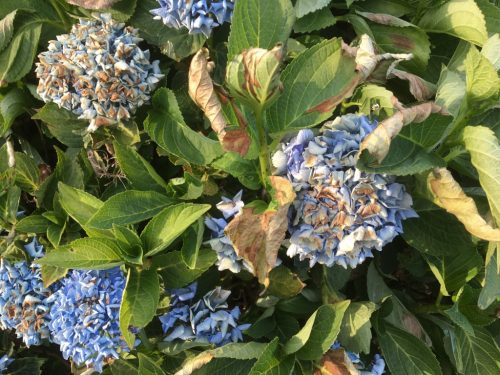
Leaf and flower heads wither: sun and heat damage during heat wave. Shielding and regularly giving lots of water (at the roots) can prevent this.

